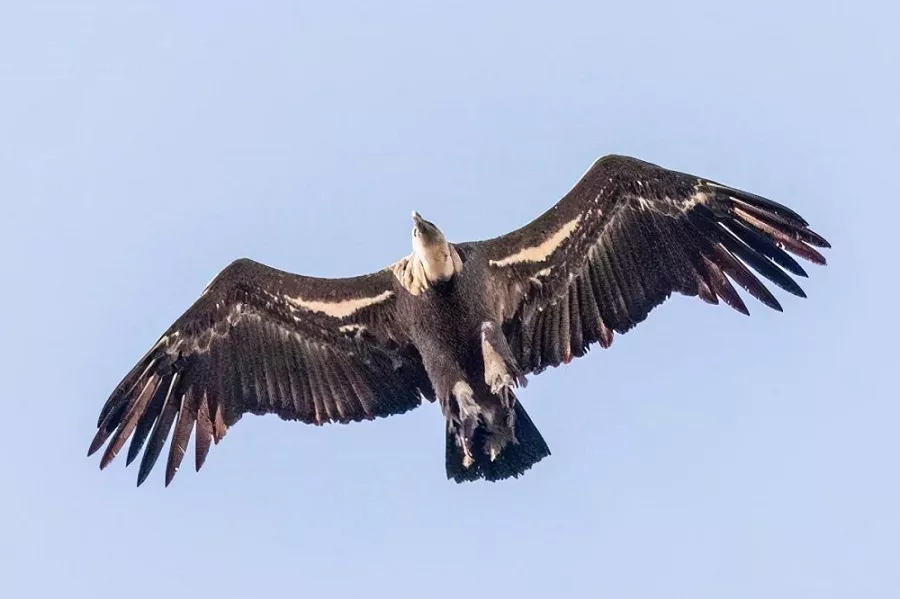The world is home to a variety of vultures, but there’s one species that stands out for its sheer size: the Andean condor. With a wingspan of up to 10 feet (3 meters) and adult males can weigh up to 33 pounds (15 kilograms), this bird of prey is the biggest vulture in the world. In this article, we’ll explore the fascinating world of the Andean condor, from its physical characteristics to its role in the ecosystem.
Physical Characteristics
The Andean condor is a sight to behold. Its black feathers contrast sharply with its white collar and large, bald head. But it’s not just its appearance that’s impressive. This vulture also boasts a number of physical adaptations that make it an efficient predator. For starters, its wings are incredibly long and broad, giving it excellent lift and maneuverability. It can soar at altitudes of up to 16,000 feet (5,000 meters), using thermal currents to stay aloft for hours at a time.
Another unique feature of the Andean condor is its digestive system. Like all vultures, it has a highly acidic stomach that allows it to break down tough animal hides and bones. But unlike other vultures, it has a crop that acts as a storage chamber for food. This means it can eat up to 15% of its body weight in one sitting, then digest the meal gradually over several hours.
Habitat and Range
The Andean condor is found primarily in the Andes Mountains of South America, where it inhabits high-altitude regions between 5,000 and 16,000 feet (1,500 and 5,000 meters). It prefers rocky, inaccessible cliffs where it can nest and roost safely. These birds are also known to migrate great distances in search of food, traveling up to 200 miles (320 kilometers) in a single day.
Behavior and Diet
Andean Condors are primarily scavengers, feeding on carrion (dead animals) that they locate using their excellent eyesight and keen sense of smell. They play a crucial ecological role by removing decaying animal carcasses, thereby preventing the spread of diseases and maintaining a healthy ecosystem. These birds are not equipped with strong beaks for tearing flesh, so they rely on their powerful neck muscles to rip apart carcasses and feed on the soft tissues.
Breeding and Reproduction
Andean Condors are monogamous and form long-term pair bonds. They build large nests in rock crevices, cliffs, or trees, where the female lays a single egg. Both parents take turns incubating the egg and caring for the chick, which hatches after approximately two months. The young condor remains dependent on its parents for an extended period, taking several years to mature and develop their iconic adult plumage.
Ecological Role
As scavengers, vultures play an important role in the ecosystem. They help to prevent the spread of disease by consuming carrion that might otherwise rot and attract bacteria. This is especially important in areas where large herbivores like cows and horses are common. In addition, vultures can detect carrion from miles away, making them essential for finding hidden carcasses.
Despite their ecological importance, vultures face numerous threats in the wild. Habitat loss, hunting, and poisoning from agricultural chemicals have all contributed to declining populations. In some cases, vultures have been intentionally targeted by farmers who believe they pose a threat to livestock. As a result, several species of vulture are now listed as endangered or critically endangered.
Conservation Efforts
Thankfully, there are many conservation efforts underway to protect vultures around the world. One such initiative is the Vulture Conservation Foundation, which works to promote research, education, and habitat conservation for vultures in Europe. Another is the African Vulture Conservation Fund, which focuses on protecting vultures in sub-Saharan Africa.
In South America, the Andean condor is a national symbol in many countries, including Argentina, Chile, and Peru. These countries have taken steps to increase protection for the bird, including banning hunting and implementing captive breeding programs. In addition, many zoos and wildlife parks have established breeding programs to help boost the population of this magnificent bird.
Conclusion
In conclusion, the Andean Condor is the biggest vulture in the world and is an important part of the ecosystem of the Andes mountains. Its unique appearance and incredible abilities make it a fascinating bird to observe, but its population is under threat. We must take action to protect this majestic bird and ensure that it continues to thrive in its natural habitat.


 Facebook
Facebook  Instagram
Instagram  Youtube
Youtube 